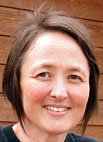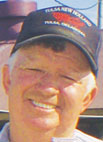
Greg and Kinsey Bradford started their farm with laying hens, but now are a multi-species operation
DAMASCUS, ARK. – Bradford Valley Farms began when Greg and Kinsey Bradford wanted to settle down and raise their family, but Kinsey got the ball rolling on the farming operation.
“Kinsey got into the health side of food, so we looked up some information on Joel Salatin and got about 25 or 50 chicks our first time, seven or eight years ago, and just started,” Greg said.
Greg grew up on a farm and worked for nearby dairy farms as a teen, but Kinsey had no farming background when they began their Damascus, Ark., operation.
“I grew up in the middle of the city,” Kinsey said. “I grew up in Oregon, and just thinking about marrying a country boy and raising three girls on a farm was the last thing I ever thought I would be doing, but it fits us perfectly. We’re blessed to be able to do this.
“She has long surpassed me,” Greg said of Kinsey’s farming experience today.
Bradford Valley Farms is about 150 acres in total and is a pasture-based, multi-species operation that markets its products directly to consumers through on-farm sales, and it all started with laying hens. They had about 600 layers at one time, but they now manage about 200 layers, including some belonging to Greg’s father, and provide eggs to a few local restaurants and stores. They have utilized IAS Browns in their laying flock the last couple of years.
“We like them, but they are not as hardy as we would like them to be,” Kinsey explained. “We would like to get to where we run a full flock for two years. That would be ideal for us because we have small children and work off the farm. They have been great for us for production.”
While the laying operation is year-round, broilers produced at Bradford Valley Farms are seasonal.
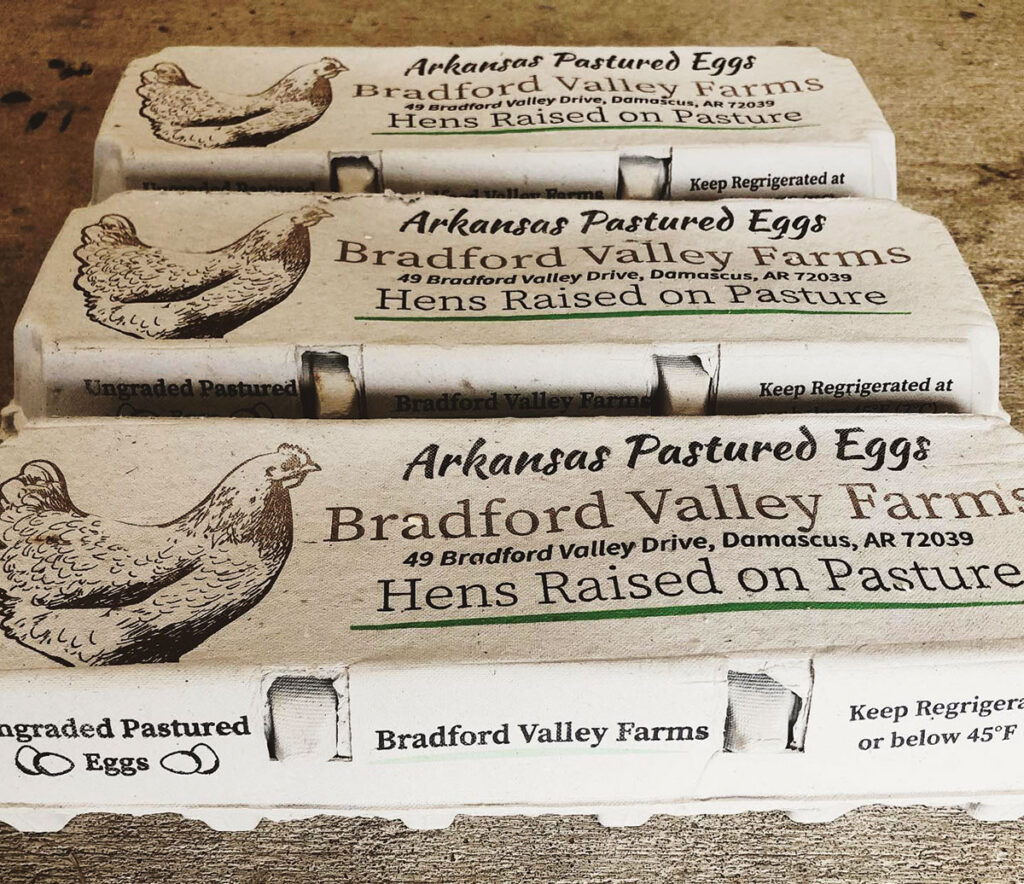
“We do boilers when the grass is green,” Kinsey said. “We have about 1,000 chicks in the brooder now. For the last three years, we have raised between 2,500 and 5,000; it depends on our market. We can scale down as we see fit and when we want to. We have been successful with it, and it is amazing how much more popular this has become in the last couple of years. We love having people out to the farm and show them where their food comes from.”
Broiler chicks are Cornish-cross, Cobb500 and/or Ross 308 purchased from Keith-Smith.
“They all grow well on pasture,” Kinsey said. “We have the capacity for 1,000 birds in our hoop houses, and we time it to where we will have 1,000 more coming out of the brooder when we process those from the houses.”
While they are pasture-based, poultry at Bradford Valley Farm does receive specialty-formulated, non-GMO rations from Powell Feed. Feed is offered free choice, 24 hours a day.
“We also have a grit, which is practically a rock, for their gizzards,” Kinsey said.
Farm-raised, grass-fed beef is another portion of the farm’s enterprise. The family currently has commercial Angus cattle and began beef about two years ago.
“We mainly sell halves to individuals,” Greg said. “There are a lot of people looking for grass-fed now. This year, we had 25 people wanting halves and could not even tap into that because we aren’t to that point.”
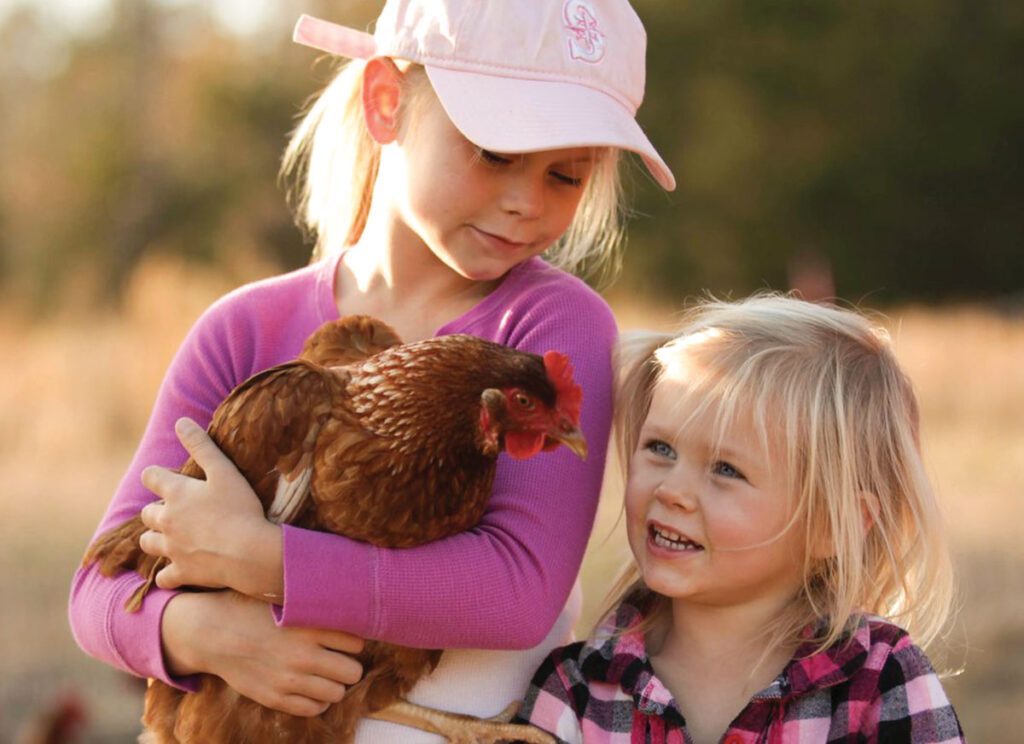
In anticipation of expansion, they doubled their herd.
“It’s a long process,” Greg said. “We want to have a couple of calves every three months because you have to be consistent and have beef available.”
Beef not sold as a half or whole is sold through individual cuts.
Animals for the beef program are typically processed at about 900 pounds. No heifers are retained at this time because of the time required to put a heifer into a breeding program. Thus, any additional females are purchased.
In addition to pasture and forages, cattle receive salt, kelp and a basic mineral.
Broilers, eggs and beef are the biggest sellers for Bradford Valley Farm, but the family also offers grass-finished lamb and pastured pork.
“I grew up with pigs,” Greg said. “Right now, we have six sows and a boar. We have about 30 or 40 meat pigs a year, and then we sell piglets. We have a lot of people who will come and get pigs to raise themselves; then, we have a little niche market with a group out of Little Rock that does a lot of barbecuing. They like them at about 100 pounds.”
Sows at the farm are Tamworth and are bred by a Berkshire boar.
“They are both good pasture pigs; they will eat grass, nuts and seeds,” Greg said. “The Tamworth do well on pasture and the Berkshire are just great, long pigs. They go good together and make great pigs.”
Meat pigs are raised to about 300 pounds at about 8 to 9 months. Pigs receive free-choice pellet and are rotated as often as possible to new pasture.
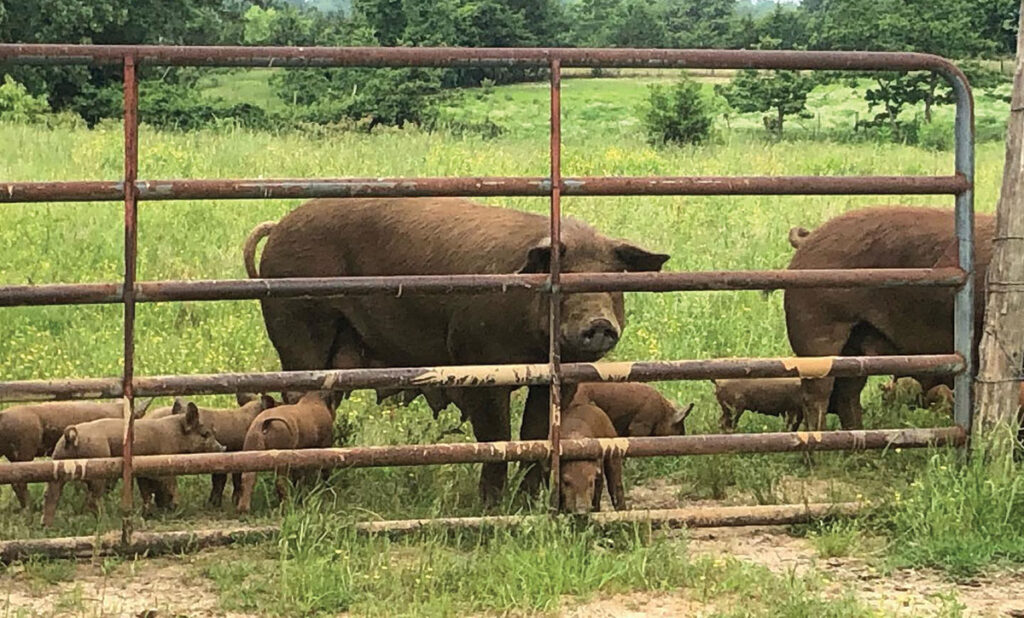
“Demand is good, and we try to have pigs ready throughout the year,” Greg said. “We like to have a big group ready in November because that’s what our community is used to from tradition. Kinsey has done an out-standing job marketing them, getting our bacon out in stores and things like that.”
The distribution of Bradford Valley Farms pork varies according to availability.
Lambs came to the farm when the Bradford children – Tucker (10), Ellis Mae (6) and Ollie (3) – began showing.
“They are really good for our daughters, and they can handle them,” Kinsey said. “We had goats, and that just wasn’t for us.”
The Bradfords obtain the majority of their lambs as orphans from Heifer International. This Arkansas-based non-profit organization distributes animals and agricultural-based training to families in need around the world to providing self-sufficiency.
“Our girls do it all,” Kinsey said of the sheep operation. “The give them bottles in the morning, then in the afternoon, rotate them and do it all, then they get the money when we sell them. It’s a good thing for them to have a little success with that and give them the responsibility.”
The lamb portion of Bradford Valley Farms is smaller, but three lambs were recently processed and are mostly sold.
All animals sold for meat are processed through USDA-inspected facilities.
The Bradfords are working with the NRCS and have received funding to install a rotational grazing system with cross fencing and waters for additional grazing paddocks. Greg added that NRSC funding will also improve forages and allow them to implement other forage species.
“It’s really exciting for us,” Kinsey said. “Animals can work together, and it’s interesting. The cows can graze grass down to a level that a chicken or a lamb can then follow and eat, then it will all grow back up. We have tried to implement a grazing program, but without the fencing and the irrigation, it was difficult. This will make such a better product for us, our customers, and our kids. Ideally, we would have our cattle and lambs graze together, or the lambs fol-low cows and that is a goal.”
The Bradfords believe allowing their animals, no matter what species, room to roam and fresh grass keep them healthy, so working with the NRCS, Greg said, will enable them to keep those animals healthy and naturally improve soil health.
As Greg and Kinsey grow their farm, they have a few goals in mind, but one of them is not leaving their full-time jobs to become full-time farmers. Kinsey is a firefighter in Little Rock, and Greg is in administration at the South Side Bee Brand School District.
“We want to make this a generational farm, and we want to establish this for our kids, so if they want to do this full-time, they can,” Kinsey said. “We need a lot of things right now, but we are looking at what our kids might need down the road.
“We want to set them so they can work the land with good, healthy, thick grass, which will raise the best animals, the way we think they should be raised. We want it to be as natural as possible because we want it to last.”






